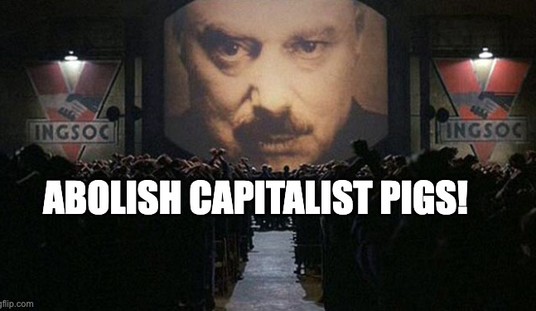For the first time since the Great Recession, a major signal of impending recession has emerged. The inverted yield curve has sent investors running away from the stock market this morning, and appears to corroborate earlier warnings that the US economy is heading into a major problem:
U.S. stocks tumbled at open Wednesday after the inverted yield curve, one of the most reliable indicators of a recession, sparked a new wave of investor fears, erasing the short-lived bump from Tuesday’s trade easing.
For the first time since 2007, the yields on short-term U.S. bonds eclipsed those of long-term bonds. This phenomenon, which suggests investors’ faith in the economy is faltering, has preceded every recession in the last 50 years. Recessions typically come within 18 to 24 months after the yield curve inverts, according to research from Credit Suisse.
“The 3-month Treasury bill to 10-year note curve has been inverted for weeks now and with the inversion of the 2-year to 10-year curve. The stars are aligned across the curve that the economy is headed for a big fall,” said Chris Rupkey, chief financial economist at MUFG Union Bank. “The yield curves are all crying timber that a recession is almost a reality, and investors are tripping over themselves to get out of the way.”
Donald Trump’s surprise change to tariffs yesterday had resulted in a more optimistic mood on Wall Street. Trump had earlier announced 10% tariffs on $300 billion of imports from China starting on September 1, but yesterday postponed about half of them until December 15. The goods spared from tariffs are mostly consumer goods, with Trump tacitly acknowledging that tariffs on those could damage retailers who need a good Christmas season this year:
Trump’s 10% tariffs will be effective from Dec. 15 for thousands of products including clothing and footwear, possibly buttressing the holiday selling season from some of the fallout from the protracted trade spat between the world’s two largest economies.
“We’re doing this for Christmas season, just in case some of the tariffs would have an impact on U.S. customers,” Trump told reporters in New Jersey. “Just in case they might have an impact on people, what we’ve done is we’ve delayed it so that they won’t be relevant to the Christmas shopping season.”
The reason for delaying the consumer-goods tariffs might be related to the impact on one person’s Christmas in particular. Trump can’t afford a recession, as I argue today in my column for The Week, not just for what it will do to his electoral fortunes but for how it will impact the Democratic race. A recession will push risk-averse voters to the safe choice, who will also be the toughest for Trump to beat in 2020:
A recession in 2020 would be a body blow to Trump’s campaign. A recession in 2019, or perhaps just the perception of its inevitability, might influence the Democratic primaries more than even Warren could predict. For insight, we can look back to 1992’s Democratic primary and how Carville’s axiom played out.
The Democratic field in 1991-2 was nowhere near as large as in this cycle, but it had a surprisingly similar progressive bent. Early in 1991, fresh off his Gulf War victory and with approval ratings of 89 percent at one point, Bush seemed unbeatable, which discouraged more well-known potential candidates such as Mario Cuomo and Jesse Jackson from throwing their hats into the ring. Instead, Clinton and his successful Southern centrism squared off against only one other governor, California’s Jerry Brown, at the time a favorite of left-leaning progressives. The three other major candidates in the race all came out of the U.S. Senate: Massachusetts’ Paul Tsongas, Nebraska’s Bob Kerrey, and Iowa’s Tom Harkin, all of whom came from the party’s more liberal and/or populist wing.
And yet, in the midst of a recession, the race took a surprisingly centrist tone. After recovering from the exposure of an extramarital affair, Clinton kept his focus on economic growth through traditional methods. This strategy turned out to be so successful that Brown tried changing tactics late in the primaries, swinging right to back a flat tax and abolishing the Department of Education, long a goal of Ronald Reagan conservatives. In the end, however, Democrats went with Clinton and his laser focus on the economy, a centrist who promised less of an economic revolution in the midst of uncertainty in the short recession.
If that same dynamic holds in 2020, it won’t benefit Warren even if she wins the recession-prediction sweepstakes. Voters will want stability and caution rather than radical shifts in policy, perhaps especially after the drama and unpredictability of Trump’s White House tenure. Almost the entire Democratic field has run hard to the left in order to out-Bernie Bernie Sanders; of the viable candidates remaining, only Joe Biden fits the mold. Biden also represents a restoration of the Barack Obama order, which is already attractive enough that Biden’s opponents have been forced into the role of attacking Obama to fight Biden for the nomination.
Voters tend to be risk-averse in economic downturns. That’s good news for those concerned about radicals in the Democratic Party, but it’s not good news for Trump. The economy was performing well enough for voters to roll the dice on Trump three years ago, but they may not be as sanguine about it next year if the economy hits the rocks.
With the inverted yield curve, time may have run out on that gamble. Economists have begun speaking out on the risks of recession, with the China trade war the biggest potential driver of a new downturn. Trump now has to consider just how long he wants to fight a trade war with China. Is it worth losing a second term to Biden, who will reverse Trump’s China policies almost immediately anyway? The concession on consumer goods is a signal that Trump might be looking for a way out, especially since Commerce Secretary Wilbur Ross admitted that China didn’t offer any concessions for the delay:
There were no concessions from China for the U.S. decision to postpone tariffs on some Chinese imports until mid-December, U.S. Commerce Secretary Wilbur Ross said on Wednesday, adding that it was too early to assess where U.S.-China trade talks stand.
Ross, speaking in an interview on CNBC, added that while further telephone conversations between the two sides were discussed, a date has not been set for another round of in-person discussions.
“This was not a quid pro quo,” Ross told the television network.
It might be time to declare victory and depart the field, assuming that China’s willing to play along. If not, Trump’s taking a big gamble on a recession, and an even bigger gamble on what even the perception of an economic reversal will produce in the Democratic primary.








Join the conversation as a VIP Member